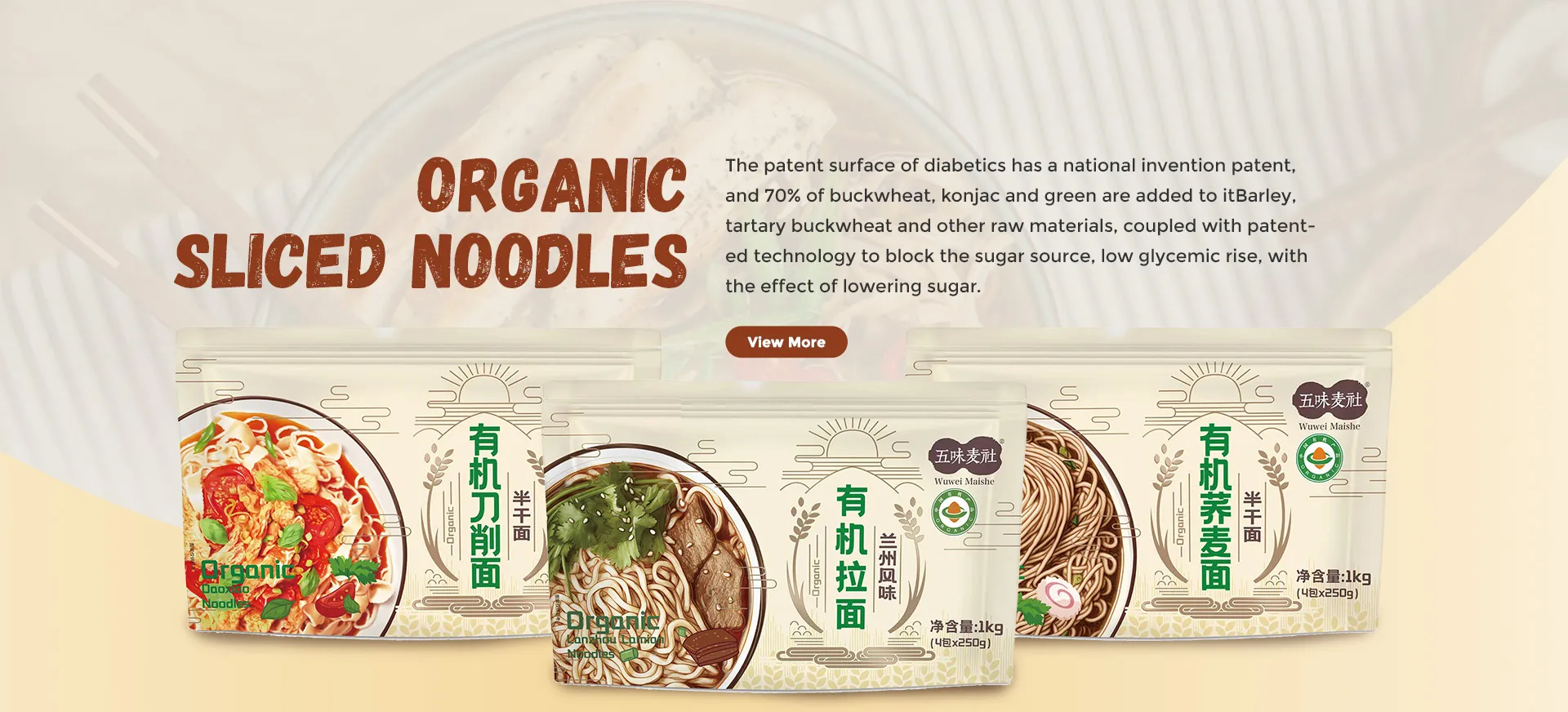buckwheat soba noodles
The Nutritional Delight of Buckwheat Soba Noodles
Buckwheat soba noodles, an integral part of Japanese cuisine, have gained popularity worldwide due to their unique flavor, texture, and numerous health benefits. Unlike traditional wheat-based pasta, soba noodles are made from buckwheat flour, which is naturally gluten-free and rich in nutrients. This article explores the different aspects of buckwheat soba noodles, making a strong case for their inclusion in a balanced diet.
Origin and Cultural Significance
Soba, which means buckwheat in Japanese, has a history that dates back several centuries. These noodles originated in Japan and have become a staple food, often enjoyed hot or cold. Soba has cultural significance in Japanese traditions, particularly during New Year's celebrations, where it symbolizes longevity and prosperity. Eating soba noodles is considered a ritual for welcoming the new year, highlighting their importance in Japanese culture.
Nutritional Profile
One of the standout features of buckwheat soba noodles is their impressive nutritional profile. Buckwheat is a pseudo-cereal, meaning it is not a true grain but shares similar properties. It is an excellent source of complex carbohydrates, providing sustained energy, which is essential for those with active lifestyles. Here are some key nutritional highlights
1. High Protein Content Buckwheat soba noodles are a rich source of protein, containing essential amino acids vital for muscle repair and overall health. 2. Dietary Fiber The high fiber content in buckwheat contributes to better digestion and helps maintain a healthy weight, as fiber keeps you feeling full longer. 3. Low Glycemic Index Buckwheat has a low glycemic index, meaning it releases glucose gradually into the bloodstream. This is particularly beneficial for individuals managing blood sugar levels. 4. Rich in Antioxidants Buckwheat is loaded with antioxidants like rutin, which can help combat oxidative stress and inflammation in the body.
5. Minerals and Vitamins Buckwheat is also a good source of essential minerals such as magnesium, manganese, and phosphorus, as well as vitamins like B vitamins, which are crucial for energy metabolism.
Culinary Versatility
buckwheat soba noodles

Buckwheat soba noodles are incredibly versatile in the kitchen. They can be served in various ways, enhancing their appeal to a wider audience. Here are a few popular preparations
- Soba Salad Toss chilled soba noodles with fresh vegetables, a light soy or sesame dressing, and protein sources like tofu or grilled chicken for a refreshing meal.
- Noodle Soup Enjoy buckwheat soba in a warm broth with mushrooms, green onions, and a soft-boiled egg for a comforting dish during colder months.
- Stir-Fry Incorporate soba noodles into stir-fried dishes, combining them with seasonal vegetables and your choice of protein for a hearty meal.
Health Benefits
Including buckwheat soba noodles in your diet can offer numerous health benefits. Their high fiber and protein content can aid in weight management, improve digestive health, and help control blood sugar levels. Furthermore, their rich antioxidant properties may contribute to overall health and disease prevention, reducing the risk of chronic illnesses.
Conclusion
Buckwheat soba noodles are not just a delicious culinary option; they also offer a myriad of health benefits that make them an excellent addition to a balanced diet. With their unique flavor and versatility, these noodles can be enjoyed in countless recipes, catering to both traditional and modern palates. Whether you're seeking a gluten-free alternative or simply looking to explore the rich flavors of Japanese cuisine, buckwheat soba noodles are a delightful and nutritious choice. So, the next time you're in the mood for a hearty and healthy dish, consider whipping up some buckwheat soba noodles and savoring the numerous benefits they offer!
-
Unleash Your Inner Chef with Delectable Italian Pasta CreationsNewsAug.01,2025
-
Savor Health and Flavor: Irresistible Soba Noodles for Sale Await!NewsAug.01,2025
-
Nourish Your Body with Premium Organic Ramen - A Culinary Delight AwaitsNewsAug.01,2025
-
Elevate Your Dishes with Our Exquisite Kinds of Egg NoodlesNewsAug.01,2025
-
Dive into Flavorful Convenience with Our Ramen OfferingsNewsAug.01,2025
-
Discover Exquisite Types of Naengmyeon and Chilled Soba NoodlesNewsAug.01,2025
-
Is Whole Wheat Pasta Healthy?NewsMay.30,2025
Browse qua the following product new the we

















































































































